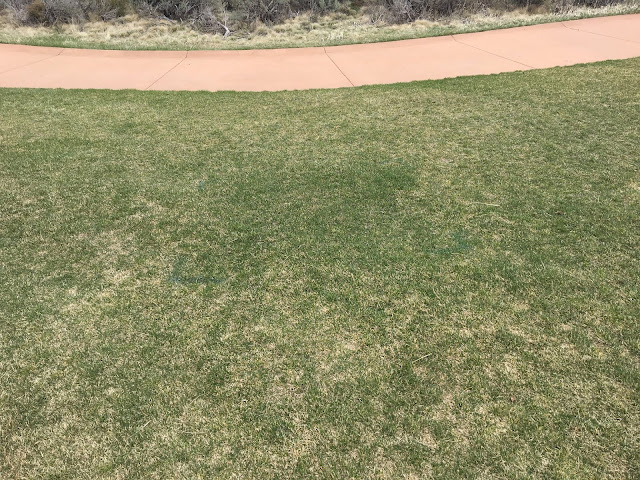There is no debating the fact that one of the biggest issues for superintendents in the mountain west are those little pesky voles. Voles are rodents and a relative of the mouse. There are over 100 species of voles. The meadow vole is responsible for the bulk of the damage in a turfgrass situation. Voles are herbivores and the majority of their diet consists of grass stems and leaves. In the summertime voles migrate to thick taller grassy/native areas for protection against predators. However, when snowfall arrives they have protection under snow cover and this is the time they migrate to fine turf areas and can cause damage. This makes golf course turfgrass very susceptible to damage during wintertime period. Voles cause turf damage by chewing grass plants extremely low to the ground. They chew so low they cause damage to the crown of the plant. Voles also create runways in the winter, first by chewing the plants, then by using these to forage for additional food each day. These runways can see extensive traffic throughout the winter as voles forage each day on 10-15 trips through these runways.
 |
| Vole Damage in a fairway situation with no Milorganite applied. |
Generally speaking, voles don’t directly kill the turf plant. Although if they damage the crown of the plant extensively, it is possible. The main issue with vole damage is the slow recovery of the turf in the spring. With the combination of cold soil temperatures and damaged turf plants in the spring, recovery can be extremely slow. The other issue with vole damage is its effect on playability. When a golf ball lands in one of the vole tunnels it can nestle down and make for a very poor lie. So until complete recovery occurs playability suffers.
 |
| Vole Damage to Kentucky Bluegrass tee surrounds. The tee surface received an application of Milorganite and sand topdressing and is not touched! |
 |
| All the years we applied Milorganite to the fairways we were getting a side benefit of vole control, which we really discovered in 2014. |
In the spring of 2016 we were amazed at almost the complete lack of vole damage on the property. Our test plots also show without question that Milorganite certainly repels vole activity. We used a rate of 0.75#/N/M in all the rough and in our test areas. The results were fantastic. With this in mind, ONCOURSETurf, LLC set-up some independent testing in the fall of 2017 at some other local golf facilities, Sonnenalp Club and Red Sky Ranch. All test plots were 25 square feet and received a rate of one pound of nitrogen per 1000 square feet. Plots were established in areas of consistent vole damage each spring. Most areas were north facing, which allowed prolonged snow cover. In mid-April this past spring after snowmelt, I was able to observe the results from those test plots. The past winter season was a low pressure vole year, meaning the voles were not as active as other years. The main reason for this was the lack of snowfall and the lack of duration of what snow was received. With voles primarily active under snowcover. No snow cover equals no voles. There was some snow cover however and we did see some positive results with the Milorganite use. The rate used for the test plots was 1#/N/M. Take a look at some of my findings below.
 |
| Voles active in the area, but the Milorganite plot stayed clean from any damage. |
Another observation from the test plots was spring green-up. At the time of the test plot observations, soil temperatures were in the high 30's. In the photos below you can already see some spring green up occurring even with these extremely cold soil temperatures.
 |
| Initial spring green-up noticed immediately after snowmelt with soil temperatures in the high 30's. |
Although it wasn't a high pressure vole year, there were certainly some indications that Milorganite can be effective for vole repellency. Presently, I am in the process of establishing some new testing on some of Colorado's front range courses to study this repellency further. Stay tuned.
Special thanks to Milorganite and WinField United for their support in establishing these test plots.
To summarize, Milorganite certainly shows some control for vole damage. This fertilizer is a great option for a dormant fertility program with getting additional side effects of vole repellency. Getting two things accomplished with one product, that is a big plus! To read the benefits of Milorganite as a dormant fertility product click HERE






No comments:
Post a Comment